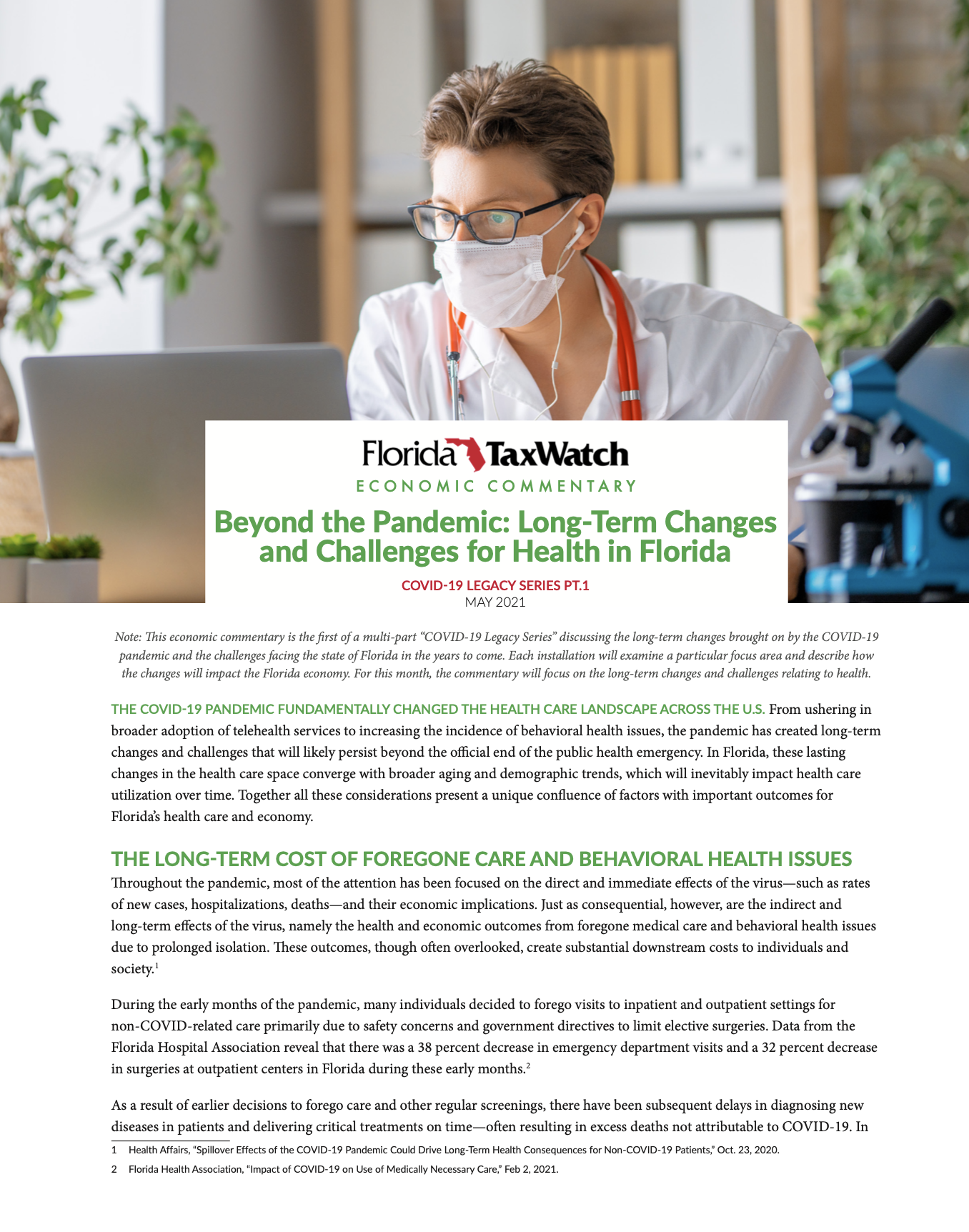Beyond the Pandemic: Long-Term Changes and Challenges for Health in Florida


THE COVID-19 PANDEMIC FUNDAMENTALLY CHANGED THE HEALTH CARE LANDSCAPE ACROSS THE U.S. From ushering in broader adoption of telehealth services to increasing the incidence of behavioral health issues, the pandemic has created long-term changes and challenges that will likely persist beyond the official end of the public health emergency. In Florida, these lasting changes in the health care space converge with broader aging and demographic trends, which will inevitably impact health care utilization over time. Together all these considerations present a unique confluence of factors with important outcomes for Florida’s health care and economy.
Throughout the pandemic, most of the attention has been focused on the direct and immediate effects of the virus—such as rates of new cases, hospitalizations, deaths—and their economic implications. Just as consequential, however, are the indirect and long-term effects of the virus, namely the health and economic outcomes from foregone medical care and behavioral health issues due to prolonged isolation. These outcomes, though often overlooked, create substantial downstream costs to individuals and society.
The psychological trauma and social isolation resulting from COVID-19 have also led to growing rates of mental illness among the population. Reports of anxiety or depression have risen by 12.7 percent in Florida since April 2020, making Florida the 8th highest among all fifty states for the average rate of anxiety and depression. Untreated, various mental illnesses can lead to reduced productivity, job loss, and economic insecurity for many individual Floridians. To the state, these outcomes can potentially spill over and require more public expenditures to address substance abuse, incarceration, and health care in the future. Since mental illness may not surface right away, quantifying these long-term costs is difficult at present. According to one study, however, the economic cost of mental illness due to COVID-19 was $1.6 trillion across the U.S.—a figure that will likely grow in successive years as mental illnesses worsen.
One potential solution to the long-term costs associated with missed care and mental illness may lie in another important development that emerged during the pandemic: the broader adoption of telehealth. According to the Centers for Disease Control and Prevention (CDC), telehealth visits rose 154 percent during the end of March 2020 compared to the same period in 2019.8 An even larger growth occurred in Florida, where health systems across the state experienced rapid expansions in the number of telehealth visits throughout 2020.
Another challenge that healthcare in Florida will face is Florida’s population is rapidly aging. Between 2020 and 2045, Florida’s population of 65+ residents is estimated to increase by 1.4 million people and grow from 20.4 percent to 25.2 percent of the state’s total population. By 2030, all Baby Boomers will be over the age of 65, which means one in every five Americans will be in the retirement stage of life. As a result of these changes, Florida’s health care system—like much of the rest of the nation—will have to handle a larger population of older patients.
Florida’s health care system will have to confront the lingering costs from foregone care and mental illness, all the while adapting to a rapidly aging population with a greater need for elderly care. Telehealth is one legacy of the pandemic that may help Florida respond to these challenges by expanding access to care for various populations, but these potential benefits are tempered by concerns over inequity and affordability. Nonetheless, for patients, providers, health care systems, and the state government, the COVID-19 pandemic has yielded lasting changes and challenges that will affect health in Florida for the foreseeable future.